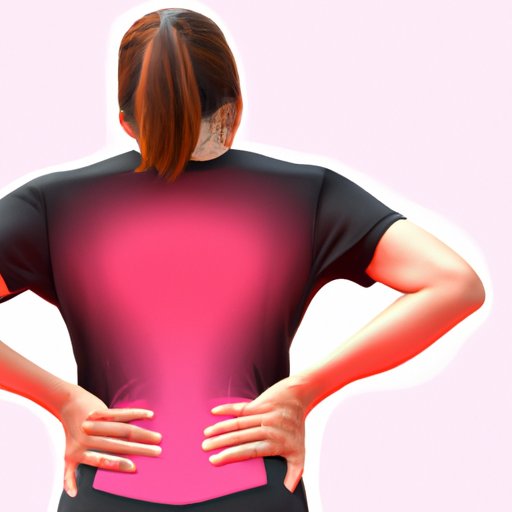
I. Introduction
Back pain is a common problem that affects people of all ages and backgrounds. Whether it’s caused by poor posture, lack of movement, or a specific injury or condition, it can be debilitating and interfere with daily life. Fortunately, stretching is a simple and effective way to improve back health, reduce pain, and increase flexibility. In this article, we’ll explore different stretching techniques and provide tips for safe and effective stretching.
II. Basic stretches for the lower back
The lower back is a common area for pain and discomfort, especially for those who spend long periods sitting or standing. Here are two basic stretches that can help alleviate lower back pain:
Knee-to-chest stretch
Lie on your back with your knees bent and your feet flat on the ground. Bring one knee up to your chest, holding your thigh with both hands. Hold the stretch for 15-30 seconds, then release and repeat with the other leg.
Seated spinal twist
Sit on the floor with your legs extended in front of you. Bend one knee and cross it over the other leg, placing your foot flat on the ground. Twist your torso towards the bent knee, using your opposite elbow to gently push against the outside of the knee for a deeper stretch. Hold for 15-30 seconds, then release and repeat on the other side.
Remember to avoid any sudden or jerky movements when stretching, and to stop if you feel any pain or discomfort. It’s important to start slowly and gradually increase the intensity and duration of your stretches over time.
III. Techniques for stretching the upper back
The upper back can become tense and tight due to poor posture or repetitive movements. Here are two stretches that can help release tension and improve flexibility in the upper back:
Shoulder blade stretch
Stand with your back against a wall, making sure your feet are hip-distance apart. Place your arms at a 90-degree angle, with your palms facing forward and your elbows bent. Slowly slide your arms up the wall, keeping your elbows and wrists in contact with the surface. Hold for 15-30 seconds, then release.
Standing side stretch
Stand with your feet hip-distance apart and your arms at your sides. Reach your right arm overhead and slowly lean to the left, keeping your left arm by your side. Hold for 15-30 seconds, then return to center and repeat on the other side.
As with lower back stretches, it’s important to start slowly and avoid any sudden or jerky movements. If you have any pre-existing injuries or conditions, speak to your doctor or physical therapist before attempting any new stretches.
IV. Recommendations for incorporating stretching into a daily routine
To see maximum benefits from stretching, it’s important to incorporate it into your daily routine. Here are some tips for making stretching a habit:
- Take breaks every 30-60 minutes when sitting for long periods
- Stretch before and after exercise to warm up and cool down the muscles
- Set reminders on your phone or computer to take stretching breaks throughout the day
- Join a stretching class or find an accountability partner to stay motivated and accountable

V. Benefits of stretching for the back
Stretching has numerous benefits for back health, including:
- Improved flexibility and range of motion
- Reduced risk of injury and muscle strain
- Improved posture and alignment
- Increased blood flow and oxygen to the muscles
- Decreased pain and discomfort
Research has also shown that stretching can improve overall physical and mental health, reducing stress and anxiety and improving quality of life.
VI. Modifying stretches for individuals with injuries or conditions
While stretching can be beneficial for most people, it’s important to modify stretches for those with specific injuries or conditions. Here are some common modifications:
- Avoid any stretches that cause pain or discomfort
- Use props like foam rollers or exercise balls to provide added support or improve alignment
- Shorten the duration or intensity of stretches if needed
- Consult a healthcare professional before attempting any new stretches
VII. Additional props or equipment for back stretching
In addition to basic stretches, there are several props and equipment that can aid in back stretching:
- Foam rollers: can be used to massage and release tension in the back muscles
- Exercise balls: can provide added support and promote stability during stretching
- Stretch bands: can help improve flexibility and range of motion during stretches
It’s important to use these tools safely and under the guidance of a trained professional.
VIII. Conclusion
Stretching is a simple and effective way to improve back health, reduce pain, and increase flexibility. By incorporating stretching into your daily routine and modifying stretches to meet your individual needs, you can see significant improvements in back health and overall well-being. Remember to start slowly, avoid any sudden or jerky movements, and consult with a healthcare professional if you have any pre-existing injuries or conditions.




